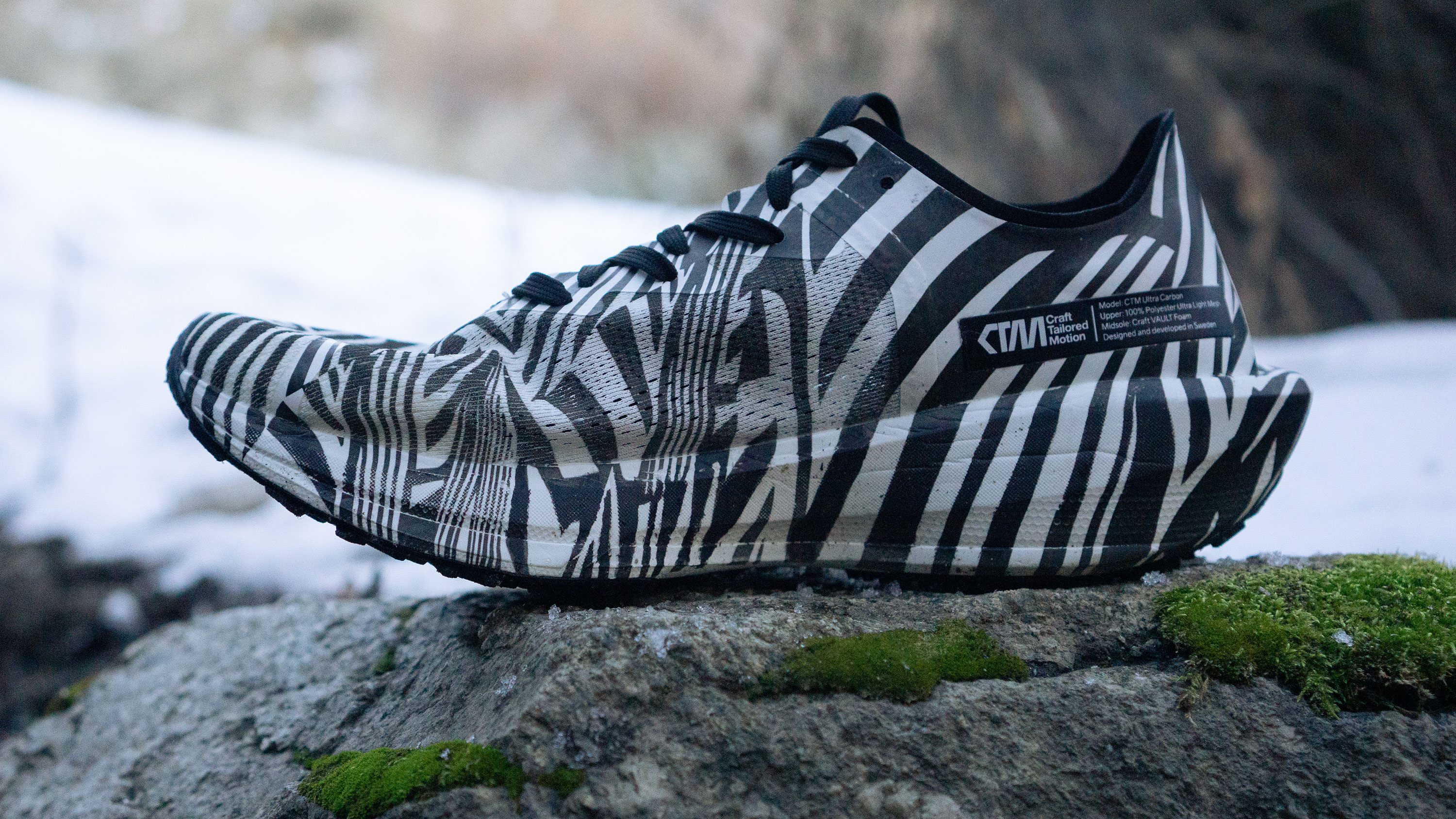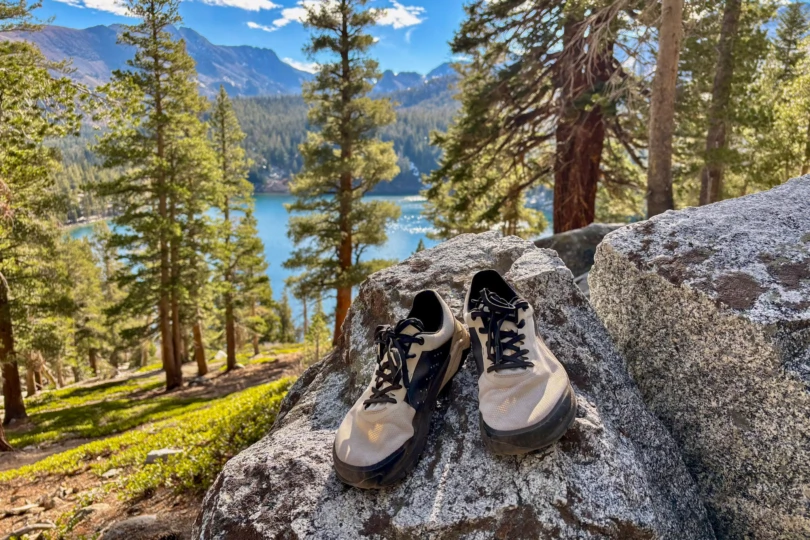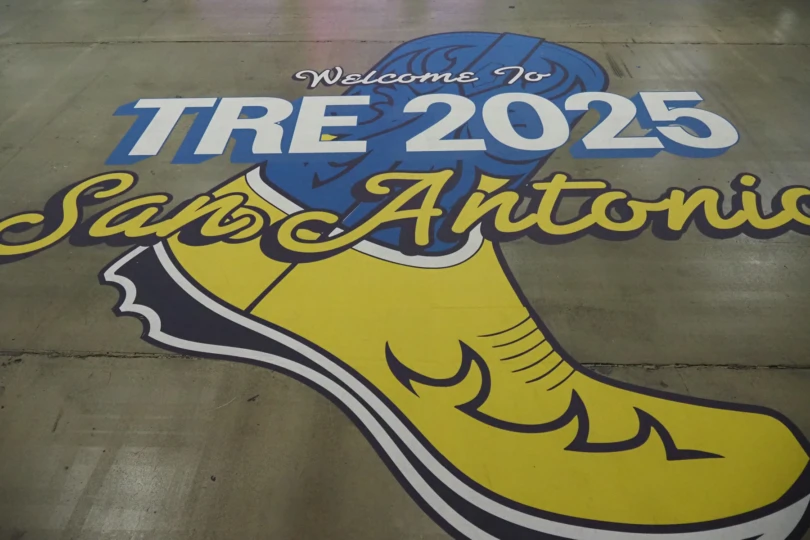Craft enters the super shoe market with the CTM Ultra Carbon. The ultradistance racer caters to a broader group of runners.
Super. Hyper. Ultra. When talking about tip-of-the-spear products, the outdoor industry speaks fluent hyperbole. But in the world of running shoes, the numbers back the marketing.
Made with a carbon plate with maximum cushion, the super shoe is engineered to deliver speed and acceleration, launching the runner out of each step. The results have shattered course records around the world and have raised hands (and brows) crying out, “I want!” or, “Mechanical doping!”
Love ’em or hate ’em, the running world has tipped head over heel for the super shoe.
Last year, Craft partnered with ultra and marathon phenom Tommy Rivs to develop a new super shoe. True to the super shoe spec, the CTM (Craft Tailored Motion) Ultra Carbon ($250) embeds a carbon leaf spring plate inside the plush max foam midsole. The stack is high. The rocker is plenty.
Unlike any super shoe on the market, the CTM is developed for runners hunting PRs on ultradistance courses. Built to go long and fast, it’s more robust (and about 2 ounces heavier), giving it a longer road life than the typical super shoe.
In short: The CTM feels stiff, cushiony, and rebounds with lively spring. From tempo to race, across variable terrain, the CTM is a symphony of motion, propelling the runner forward in effortless stride. Is it worth the price? For many, it is.
Craft CTM Carbon Ultra
Craft CTM Carbon Ultra Running Shoe Review
If you scrolled through Instagram this past summer, you might have caught Tommy Rivs raging in a pair of black-and-white auto camo running shoes. The inked graffiti pattern hid the shoe’s details, but Rivs released some details in his comments.
The partnership with Craft was formed to achieve the holy trinity: “Combine the highest level of technology and materials married with style and comfort.”
Craft sent us an early pair of the Rivs collaboration. Out of the box, the CTM shouts that it’s gonna be a rule-breaker.
Eschewing the traditional colorways of solids and subtle flair, the CTM embraced the prototype pattern and released both the men’s and women’s shoes in a bold zebra stripe. Like Rivs himself, the styling boasts bravado.
Upper Construction
Up close behind the pattern, you notice the upper is constructed from a single piece of engineered mesh. The fabric is knit but durable, and it’s riddled with pores that provide ample ventilation for hot feet to breathe.
The gusseted tongue has a touch of lightweight, 3D porous foam (like you’d find in a backpack). The honeycomb padding draws moisture away from the foot, encouraging ventilation, and protecting the foot from the overlying laces.
Staggered eyelets zig-zag the laces over the foot’s tarsals. Lacing into the shoe is more complicated than most. You have to loosen and pull each lace to fit it to your foot.
But what you give up in ease, you get back in security. The shoes batten down and don’t give an inch over the run. Of course, the laces can be rethreaded to give you a more traditional fit.
Void of any firm structure support, the toebox is reinforced on the inside with a soft, pliable TPU rand. The heel counter is made from a similar, but slightly heavier duty TPU. A pair of pads hug the Achilles and keep the heel locked in the shoe.
Finishing the top, a thin rubber strip wraps over the big toe from the lace cage, adding some extra durability and structural support.
Cushion & Tread
What the shoe lacks in hard structure, it gives back through a supportive EVA Vault Foam midsole. And it’s a lot of cushion; 40 mm of stack is engineered into a 10mm drop, creating a rolling capsule for the foot.
But, don’t assume the stack leads to instability. Similar to other max-cushion shoes, the foot seats deep in the midsole, anchoring you to the shoe.
Foam rails ride up midfoot to hug the heel for support and taper off toward the ball of the foot. The combination provides ample support with room for the toes to spread.
Reminiscent of the Brooks Hyperion Elite, HOKA’s Carbon X2, or HOKA’s even more egregious TenNine, the foam midsole trails about 1.5 cm off the back of the shoe before it cuts back under the heel. The offset pushes the center of gravity slightly forward and initiates an early rocker that carries momentum heel to toe, maximizing an efficient gait cycle.
The CTM comes with a popcorn EVA sock liner. The pebbly insole is similar to Altra’s Provision 4, which we likened to stepping into a foot massage. It’s super-comfortable and wakes up the feet.
The midsole rides over an aggressive three-piece tread. Correction — it’s aggressive for a road shoe. The 3mm, A-shaped tread pattern sits somewhere between Salomon’s Sonic Balance 3 (our choice for the best road shoe of 2020) and Brooks’ Cascadia (a venerable trail shoe).
It punches well above its super shoe counterparts but is less aggressive than a dedicated trail shoe.
Carbon Plate
Under the foam lies a forked carbon fiber plate. And this is what truly elevates the CTM to superhero status.
Carbon is prized for its light weight, stiffness, and ability to infinitely flex. The thin plate serves as a springboard, loading energy from each step and releasing it as you toe off the shoe, launching you into the next stride.
The hitch? Lab studies show that carbon plates only help if you’re running fast (optimally, running faster than 6-minute miles). Hence, this is why we see carbon-plated shoes worn by elite runners.
Why the bifurcated plate? Our big toe plays a huge role in balance and foot strength. Data shows that the toe supports upward of 40% of the load on our feet — with most of it imposed on the big toe. Being the last part of your foot to leave the ground, the big toe also corrects our natural tendency to pronate.
A forked carbon fiber plate allows maximum propulsion while allowing the foot to flex and torque with changing terrain. All critical components when turning it up to 11.
Run Tested
The CTM is billed as an ultra workhorse. To test the shoe, we ran it over tarmac that disappeared under gravel and tipped out onto singletrack. Our average runs were 10 to 15 miles at a moderate and fast pace.
Fit & Feel
When getting ready to lace into the CTM, you immediately notice the staggered eyelets. The holes jog narrow and wide. They come laced out of the box doubled over on one side before crossing over to the other.
This doubling-back mechanism effectively cinches the flat laces in place, prohibiting the laces from slipping. But it also requires some loosening and tightening each time before you can slide the foot into the shoe.
The heel is pliable, so it’s less effort to slip on than it would be in a shoe with a firmer heel counter. If it wasn’t a race-specific shoe, a pull loop would make strapping on the shoe easier.
But because it’s an ultra shoe, this lace configuration can be forgiven. The shoe is designed to put on and stay on for 12 to 24 hours. With this in mind, the out-of-the-box lacing makes sense.
For others who may want to use the CTM as a daily trainer, bring a shoehorn. Or, you may find it easier to unlace the shoe entirely and re-lace with a more traditional crisscross pattern.
Upper
Paraphrasing Antoine de Saint-Exupéry, perfection is achieved when there is nothing left to take away. Craft has stripped the CTM down to the bare necessities and nothing more.
The collar is minimal and anatomically cut to avoid rubbing the ankle bones and Achilles. Other than the light honeycomb padding, the tongue has very little structural integrity and disappears under the laces. Mesh wings center the tongue and prevent it from sliding off to either side.
In fact, the only cushioning in the upper are two pads that sit just below the heel collar, preventing the calcaneus (the ball of the heel) from riding up the shoe’s smooth inside.
The entire upper feels light and airy, laying seamlessly against the foot. With so little structural support, it’s easy for a lace carriage to collapse against the toes. The fact that the CTM can pull off a seamless fit without any awkward binding or rubbing is fairly astounding.
Because only 30 size 9 shoes were pre-released, I removed the sock liner to get a better fit for my size 9.5 feet. And while I almost always size up half a size in running shoes, the size 9 (sans liner) felt nearly perfect — leaving about a half-thumb’s room out front.
The toebox has a generous fit that I’d expect in an ultra shoe, which allows you to get away with sizing down.
The Ride
Underfoot, the chassis is formed from Craft’s Vault Foam. It’s a modified EVA that feels lighter and firmer than a traditional EVA.
Rather than collapsing into the cushion with each step, the midsole sucks in the force, only to push back as you step out of each stride. This quality also contributes to the overall durability of the midsole, which for a $250 shoe, we’ll take.
The foot is seated in the cushion’s deep mold and really feels like you’re inside the cockpit. Engineered with an aggressive stack height, drop, and rocker design that begins to break under the ball of the foot, you instinctively roll through the gait cycle.
Of course, the CTM has a carbon plate. And it feels rigid, to be sure. But, the departure angle points the runner into forward momentum, making the shoe feel fairly familiar, not unlike softer, rocker-style shoes.
There’s no harsh snap when transitioning from heel to toe, as you can experience with many elite-level carbon shoes. This gives the CTM latitude to run as a high-mileage, everyday trainer.
The carbon plate does a pretty good job as a functional rock plate. Overall, the shoe feels less tippy than other firm, high-cushion trail shoes (like La Sportiva’s Jackal). Rather, it felt stable and controlled, and less prone to ankle rolls.
For those who like the feel of the ground, the cushion is beefy and gets in the way of that true trail sense. But, the forked plate yields a touch of lateral torque, allowing you to better negotiate trail erratics.
Traction
The fat, foam midsole is anchored to the ground with three rubber pads dotted with an aggressive micro-chevron lug pattern. The ball of the foot has a 3mm A-shaped tread.
The heel pads hook around the shoe’s aft with a combination of A and stubbled tread. Bare foam is exposed under the arch of the foot.
Traction runs through the entire rocker, maximizing contact with the ground from strike to toe-off. It’s clearly designed for high-cadence runners utilizing their entire stride.
Underfoot, the tight lug pattern is versatile enough to ride on pavement. But, it’s entirely capable of running drier, sandy, even rocky trails.
Think of it like riding a racy gravel bike, strapped with 35mm tires. It’s a wider platform that works well on pavement, but it has enough bite to carry you through lighter trails. While not specific to any one task, it’s more capable for long days in the saddle where the ground conditions change.
Durability
Most super shoes have limited use and shelf life. Light uppers, thin outsoles, soft cushion — at best, you’re getting 300 miles on these elite kicks.
Furthermore, these had better be really fast miles under a light, efficient runner. Science shows that the stiffness from a carbon plate reaps dividends when clocking 10 mph or faster. For most of us, this shelves the super shoe until race day. That’s a lot of coin for a specific task.
The CTM is a different flavor. It has a thicker, more durable outsole and a resilient midsole foam. And while the upper is super-light, it feels more durable than most mesh shoes on our shelves.
It doesn’t have a sandwiched mesh to snag or catch. It feels light but stout, capable of withstanding trail debris or wearing through in high-friction areas.
Pros:
- Wide toebox
- Seamless, one-piece, durable upper
- Breathable
- Carbon leaf plate
- Superior cushion
Cons:
- Heavy
- Loud upper may turn off some
- Upper lacks support
- Lacing system is finicky
- Tongue is very thin
Should You Buy the CTM Carbon Ultra?
The CTM Carbon Ultra
I’m a fan of the Amazon Prime series “Grand Tour.” It features three aging-out hosts who galavant around the world, pitting cars against challenges in exotic locations.
The pattern is predictable. James May selects a gentleman’s antiquity. Snappy, erratic, and often in over his head, Hammond brings a small performance car. And then, there’s Jeremy Clarkson, whose choices weave the pragmatic with prodigious torque and power.
On the latest special, Clarkson rolls a Bentley Continental GT through Madagascar’s backroads. Elegant and powerful, the modified safari V-8 coupe storms through mud-slicked roads that could swallow a school bus, but rolls into town with grace.
Craft’s CTM is a bit like the Bentley. The monstrous chassis is wrapped in a loud, but beautifully simple, upper. Riding over a durable cross tread, it cashes checks on terrain that no other super shoe has business writing.
And while most super shoes mandate a judicious pace, we didn’t experience the stringent speed requirements in the CTM. There was no awkward bounciness when warming up or cooling down. It didn’t force us into an unnatural cadence.
And that’s probably where the rest of us will find value in the CTM. The plate and rocker meet you where you’re at. If you want to go slow or use it daily as a trainer, it can do that.
Of course, champing at the bit, it capably steps up to the task when you decide to turn it up, and will do so for miles on end.
The Competition
While there is no direct competition with the CTM, there are some that challenge its ability on dirt and road. The North Face recently released its Flight VECTIV trail shoe, which is about as close a shoe you’ll find to the CTM.
Both have a carbon plate with a fantastic rocker. The VECTIV might take the edge in the rocker category, smoothly transitioning the gait cycle without any flat spot. It trades the plush midsole for some extra padding in the tongue and a more supportive upper.
The VECTIV’s stack is 15 mm lower to the ground and has a more relaxed drop (6 mm vs. the CTM’s aggressive 10 mm). Both have a modified chevron lug, but the VECTIV is 0.5 mm taller and spaced more than the CTM. The VECTIV is a better pure trail shoe.
The VECTIV uses the same double back lacing mechanism but pulls it off more elegantly. And the padded tongue is integrated into the shoe, giving the VECTIV a better fit and feel, and an overall better user experience to slip into.
The CTM’s upper is tough and durable — and the choice for hot weather. But, it lacks upper support. The VECTIV has a more robust heel cup and TPU rands that protect the shoe and add support. The CTM, on the other hand, uses the plush cushion to stabilize the foot.
The VECTIV weighs 0.6 ounces more on our scales (10.3 ounces as opposed to the CTM’s 9.7 ounces). It’s also $50 cheaper, listing at $200 vs. the CTM’s $250.
If you’re running primarily trail, we’d recommend the Flight VECTIV. If you’re going longer, with more road than trail, the CTM is the better choice.

















